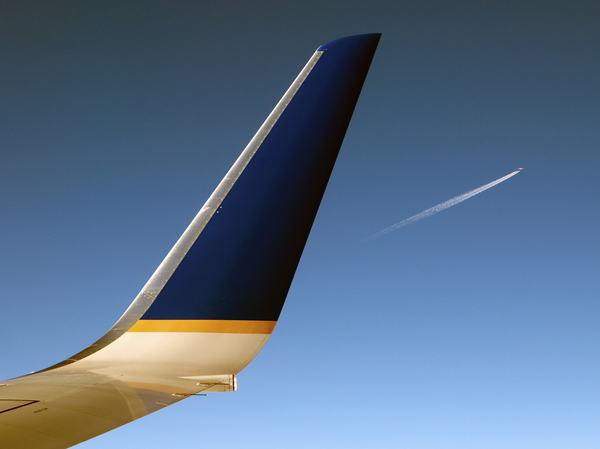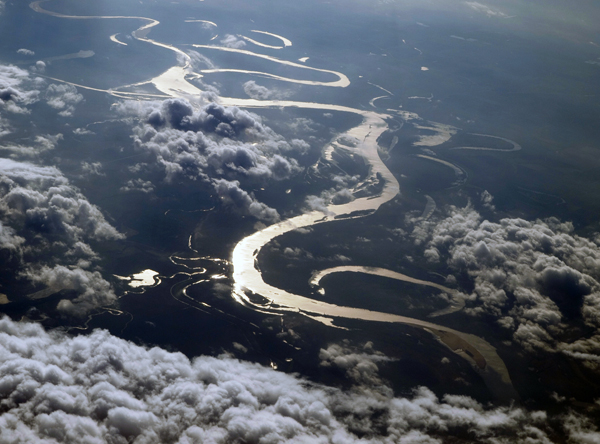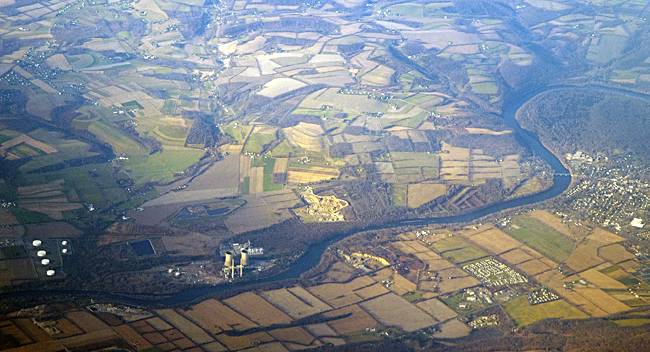An Airplane Window
Today, then and now from an airplane window. The University of Houston's College of Engineering presents this series about the machines that make our civilization run, and the people whose ingenuity created them.
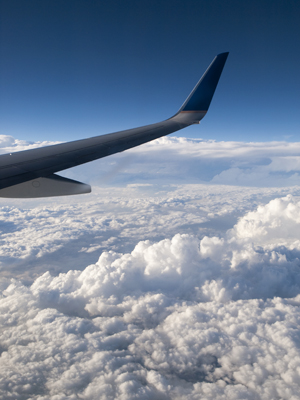 I'm back from another commercial flight across the country: At 500 miles an hour and, from six miles up, I pondered the altered reality outside -- earth, clouds and sky transformed. Boring old air travel is far less boring when we pause to look out the window.
I'm back from another commercial flight across the country: At 500 miles an hour and, from six miles up, I pondered the altered reality outside -- earth, clouds and sky transformed. Boring old air travel is far less boring when we pause to look out the window.
Back home, I found a 1931 textbook on Air Transport Operations. That was before airliners had retractable landing gear, aluminum skin, pressurized cabins, jet engines, and little bags of pretzels. This book took on the whole structure of commercial flight: airports, hangars, wind indicators, light beacons, instruments, ground procedures, engines -- and their management.
But components dictate structure. As components evolve, everything changes. Radio was in its cradle -- unreliable -- very limited range. One chapter deals with making it work in airplanes. Amelia Earhart and Fred Noonan would perish in the Pacific six years later because air-to-ground radio was still primitive.
But, once we had reliable radio, a hundred other things would also change. Another chapter on Airways makes that same point. An illustration of a flight path shows a topographical section between Omaha and San Francisco. One leg passes over the 10,000-foot Wasatch Mountains. Passengers had to fly in air almost too thin to breathe.

My recent flight was well over twice the height of any mountain in America while my cabin pressure was about the same as the air in Los Alamos, New Mexico. How we define an airway today has nothing to do with how we did it then. Today we think about great circle distances and jet streams -- not about mountains.
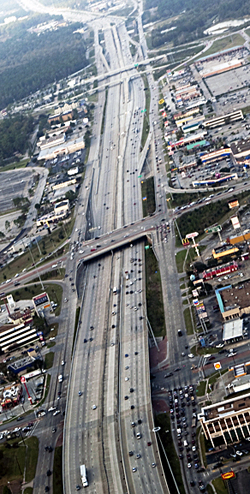 Finally, a chapter is titled Airplanes. We finally meet the flying machines themselves -- or do we? The book says a lot about features that should be built into "modern" airliners. But it studiously avoids commenting on current models.
Finally, a chapter is titled Airplanes. We finally meet the flying machines themselves -- or do we? The book says a lot about features that should be built into "modern" airliners. But it studiously avoids commenting on current models.
Two airplanes identified in photo illustrations reveal the trap facing any book about a wildly fluid technology. One's the dramatic four-engine Fokker F-32. It turned out to be an underpowered flop. By the time ten were made, its weaknesses were evident. It failed to replace the Fokker and Ford Trimotor passenger planes. The book also shows a Boeing Monomail -- an open-cockpit, single-wing, single-engine, airplane. It was ahead of its time with retractable landing gear, all-metal construction, and a four ton cargo capacity. But it takes more than just features to make a proper whole. The Monomail also lived a short life.
That's the world where I first gaped at flying machines -- all new, uncertain, and changing far too fast to be captured in a textbook. Now we ride our aging jet planes. But look out the window at the impossible perspective -- sky almost black, mountainous clouds, Lilliputian cities, ribbons of highway or rivers. The jets may've grown old, but the view still boggles acceptance.
I'm John Lienhard at the University of Houston, where we're interested in the way inventive minds work.
W. L. Smith, Air Transport Operation. (New York: McGraw-Hill Book Co., Inc., 1931.) Airway drawing is from this source. All photos by J. Lienhard.
